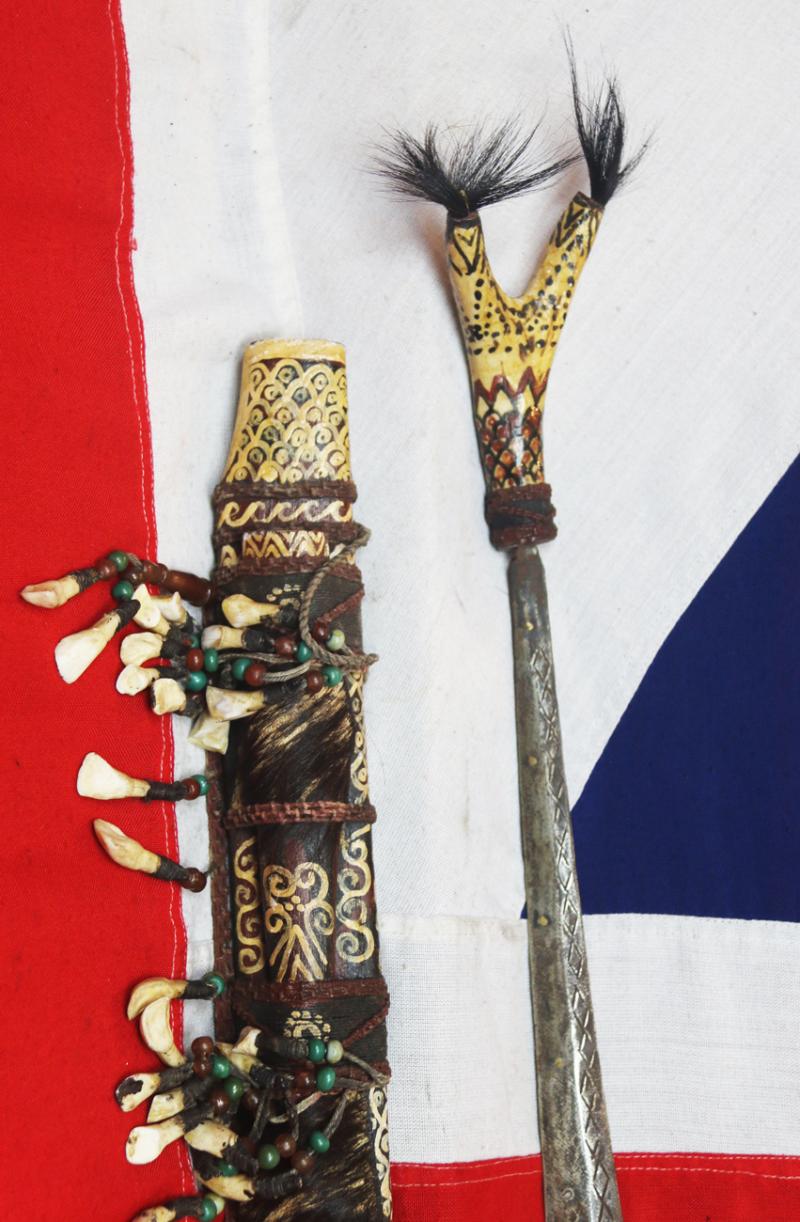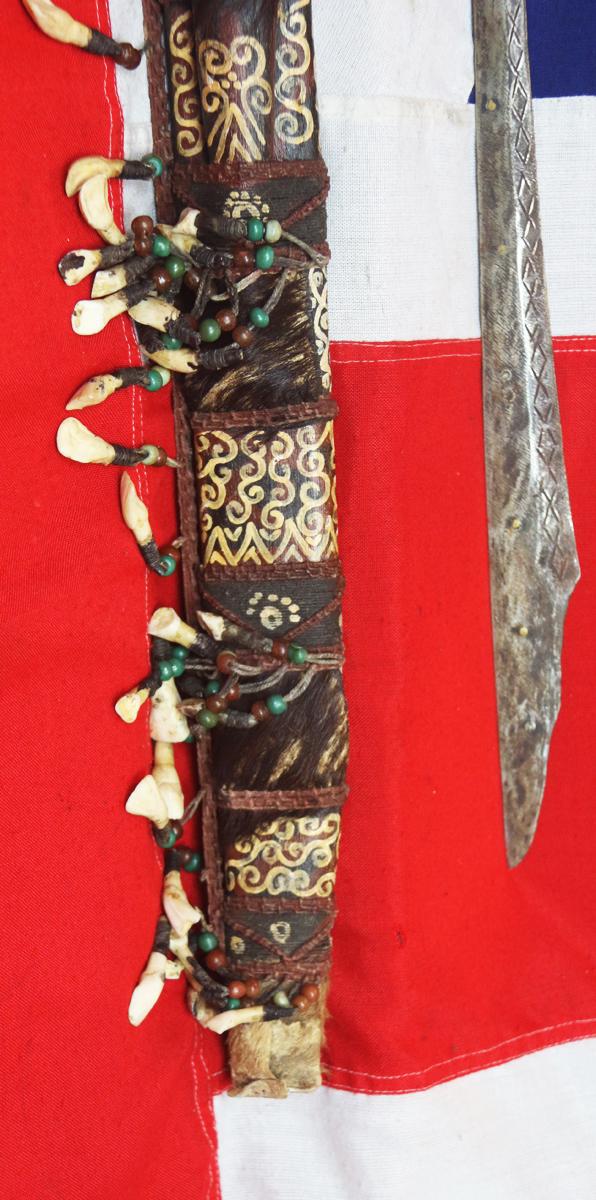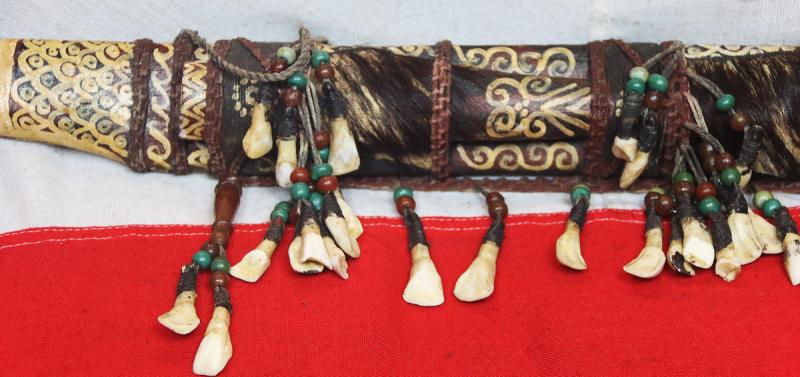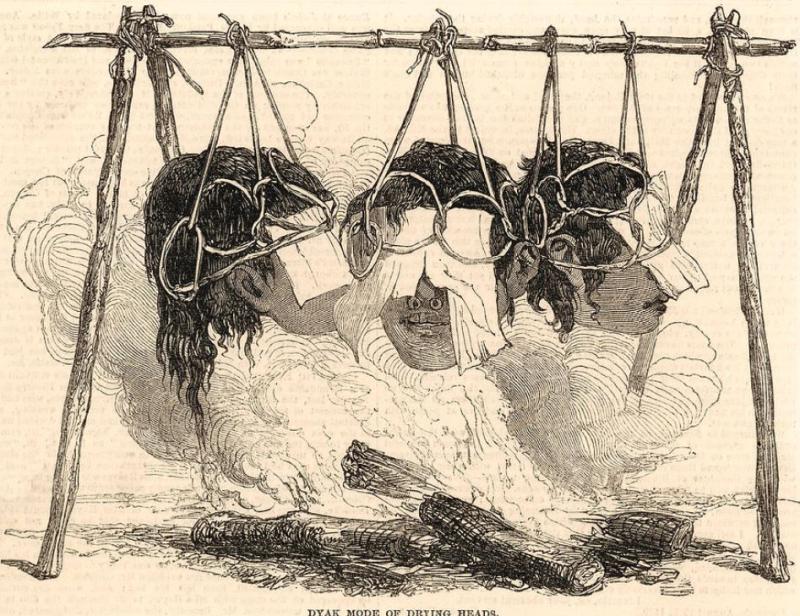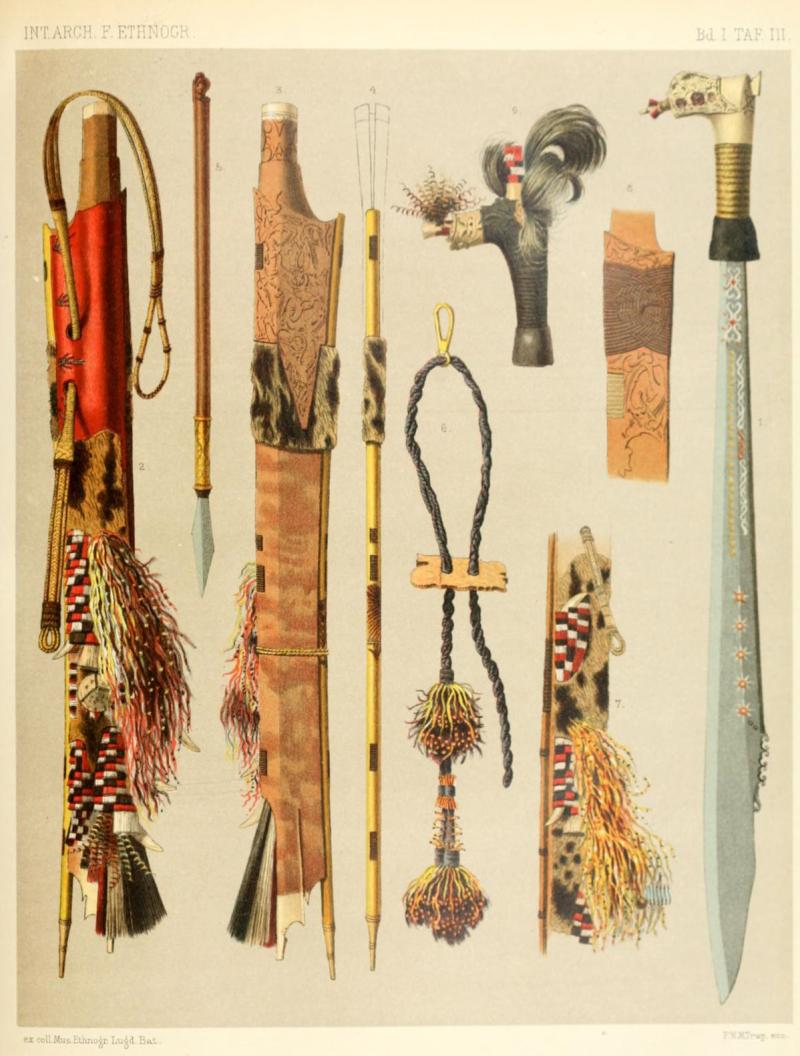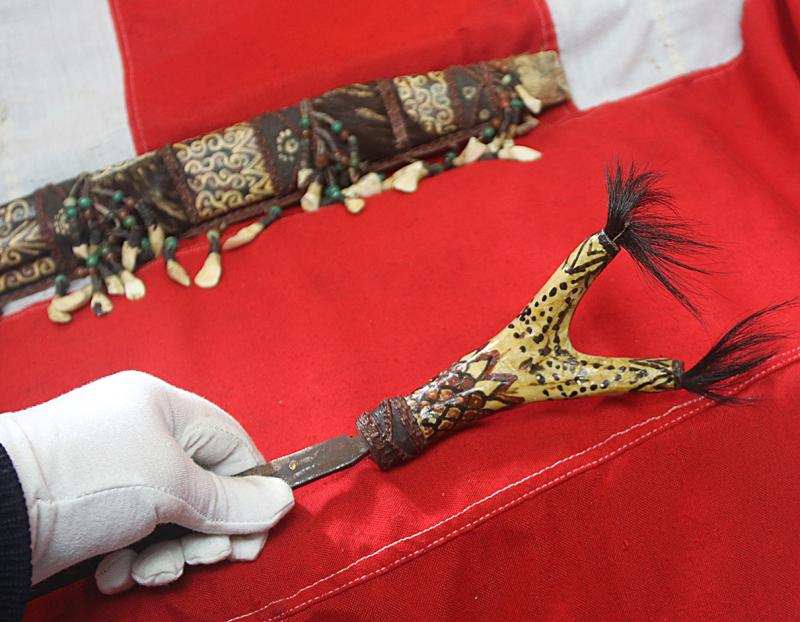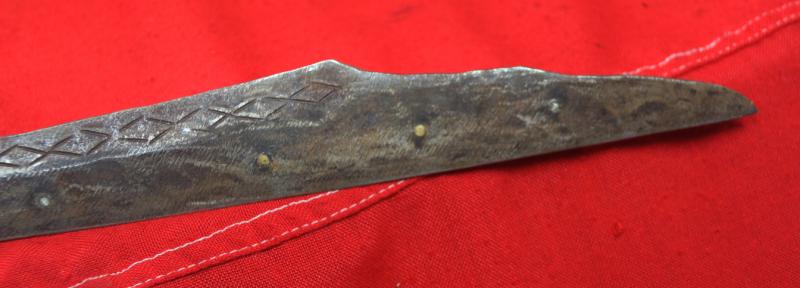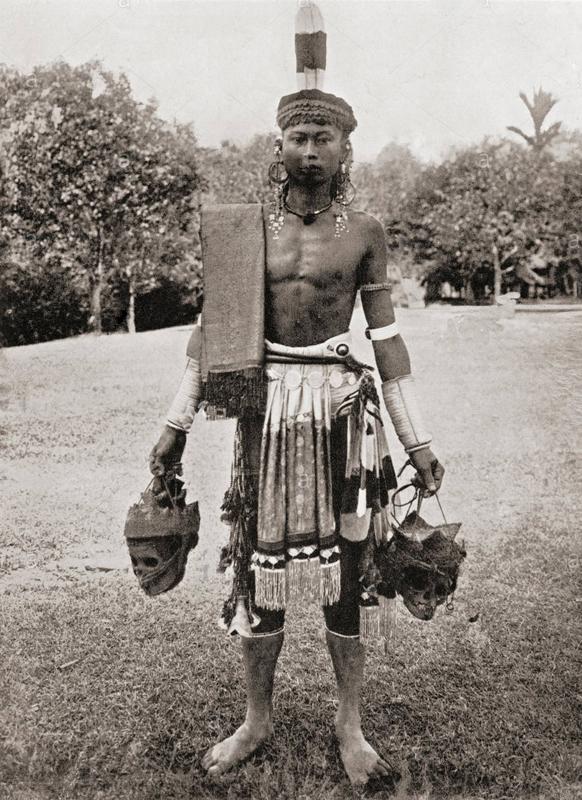A Dyak Of Borneo, Tribesman's Mandau. A Tribal Head Hunter's Sword, From Kalimantan Island
A Dyak sword mandau, swollen Single edged blade flat on one side and slightly tapered on the other with inlaid dots. A scarce Mandau of the Dayak people, of Borneo, Indonesia. With carved hilt, complete with some tufts hair. Traditional blade with convex obverse and concave reverse. The handle and sheath of this Dayak sword is made of wood and are both decorated with waxed and braided rattan, which afterwards was richly decorated with many decorations such as: Goath hair, beads, rattan wickerwork, teeth from monkeys and wild boars.
The whole is also richly decorated with painted signs, such as beringjan, circles, leeches, dashes and zigzag lines.The blade was apparently designed convex in such a way as the head could be decapitated more easily by a swinging arc while running. The last photo in the gallery is a period photo of an indigenous Head Hunter, holding his 'prize', achieved with his Mandau.
According to the Dayaks themselves, the most sacred and powerful mandaus are those which were made by Panglima Sempung and Panglima Bungai, who are considered to be the two highest skilled masters.
The mandau is one of the most romanticised, albeit macabre, weapons of Borneo. The way of life of the Dayak aborigines, maintaining their ancient customs, habits and religious beliefs, has always involved the taking of heads. They became feared as head-hunters and only in recent years has the practice been “largely” abandoned. (Officially, headhunting doesn’t exist in Borneo despite the occasional report of an isolated jungle beheading). The swords are also “working” swords, capable of separating a branch from a jungle tree as much as a head from man.
Literature:
Art of Island Southeast Asia, The Fred and Rita Richmann Collection in The Metropolitan Museum of Art (New-York). FLORINA H. CAPISTRANO. Ed Baker, 155p, 1994.
Forgotten Islands of Indonesia, The Art & Culture of the Southeast Moluccas. NICO DE JONGE & TOOS VAN DIJK. 160p, 1995.
Age: Est. from early-mid 20th century
The Engraving of the Dyak Method Of Drying Heads is from the Illustrated London News {Public Domain}
Code: 25186
595.00 GBP


